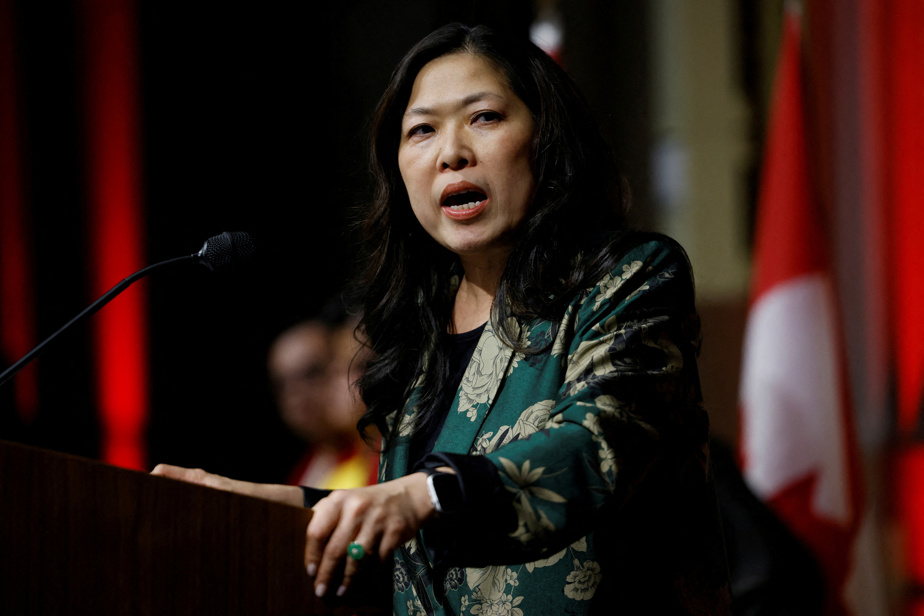(Ottawa) Experts say it’s time for Canada to move closer to Southeast Asia as its relations with Asia’s two heavyweights, China and India, cool.
Some of them add that Canada has an advantage as a middle power with large institutional investors.
This call comes after years of tensions with China, notably over the detention of two Canadians for more than 1,000 days, and more recent friction with India after Ottawa accused its government of complicity in a homicide committed in British Columbia.
Wayne Farmer, who heads the Canada-ASEAN Business Council, recalls that Canada is currently in a difficult situation with China and India.
Next month, Canadian International Trade Minister Mary Ng will lead a trade mission to Malaysia and Vietnam with another planned later this year to Indonesia and the Philippines. The trips are part of Canada’s efforts to boost trade with most of the 10 countries that make up the Association of Southeast Asian Nations.
The ASEAN bloc and Canada have committed to a trade deal by the end of 2025 and Indonesia has also agreed to sign a deal with Canada as early as this year. It’s part of Canada’s Indo-Pacific strategy, launched by the Liberal government in 2022 with the aim of forging closer ties with Asian countries other than China, viewing Beijing as a disruptive power that harms Canadian interests.
Last month, China and Canada both said they hoped to work more together, but there are serious differences in how they view resuming relations.
On the other hand, the strategy envisaged doubling down on ties with Japan and South Korea while emphasizing closer ties with India. But relations with New Delhi have cooled profoundly following India’s alleged involvement in the assassination of a Canadian Sikh leader last year, to the point where India temporarily froze visa applications from Canadians and Ottawa recalled more than 40 diplomats after India threatened to strip them of diplomatic immunity.
The Asian Development Bank forecasts relatively strong economic growth in Southeast Asia at a rate of 4.7%, putting the region’s countries ahead of China but behind the current boom in India.
Dewi Fortuna Anwar of Indonesia’s National Research and Innovation Agency says Canada enjoys a strong brand in the region, largely thanks to previous development projects, but that its commitment to South Asia -East has been intermittent so far. “Canada has never been absent, but it feels like it hasn’t been as visible in recent years,” she said recently during a panel.
“The ASEAN region will be very welcoming to Canada if it attempts to play an active role again. »
Wayne Farmer reports that Canada is poised to benefit economically from trade agreements and its economic missions. But he adds that Canada may fail to take advantage of an infrastructure boom in a region hungry for funding to build bridges, ports and roads, often through public-private partnerships, because Canada’s Indo-Pacific strategy plans 750 million for such investments, which Mr. Farmer describes as a meager sum.
“We have to spend significant amounts of money. But it is not necessary that everything comes from the government,” he explains.
Last fall, the Alberta Investment Management corporation opened its first Asian office in Singapore, where the Ontario Teachers’ Pension Plan and the Caisse de dépôt et d’Investissement du Québec (CPDQ) already have offices.
Mr. Farmer believes Canada’s largest institutional investors could expand into countries like Vietnam, Indonesia and the Philippines, particularly if Ottawa proposes to absorb investors’ risks through agencies like Export and Development Canada. “Helping reduce risk and encouraging these investors to innovate viable projects there – that’s helpful while government budgets are limited.”
Wayne Farmer also suggests that Canada export liquefied natural gas to countries that still use oil and coal as energy sources, such as the Philippines and Singapore. That would likely require expansion beyond Canada’s first LNG export terminal, which is nearly complete in British Columbia.
It would also depend on Ottawa accepting a realistic approach, he said, when it comes to countries seeking to lift their populations out of poverty while potentially meeting international climate goals.
Longer term, Wayne Farmer believes these countries could welcome Canadian nuclear technology, which has the added benefit of relying on reactors fueled by forms of uranium that typically cannot be used to create weapons .
A former Canadian ambassador to Vietnam, Deanna Horton, adds that Ottawa could also find common cause with countries in the region by working together to fend off pressure from more powerful states in trade or supply chains. “Economic coercion operates outside the rules-based order, and it is exercised by the superpowers. And it’s the ASEAN countries that are suffering from it — and Canada has suffered from it, both from the United States and from China,” she said at a conference organized by the Institute for peace and diplomacy in December. “Canada could play a role in helping create a rules-based order that would benefit not only the superpowers, but all those who depend on them. »
Dewi Fortuna Anwar points out that her country, Indonesia, would welcome a coalition of middle powers with Canada that would push more powerful countries to respect the rule of law.
At the December conference, Jeff Nankivell, president and CEO of the Asia Pacific Foundation of Canada, called on the Conservative Party (CCP) to signal its intention to maintain key elements of the Indo-Pacific strategy if it takes power in the next federal elections, which would contribute, he believes, to cementing relations with Asian countries. “If you’re thinking about going into government and you think that’s generally something you don’t want to torpedo, it would certainly be good to send positive signals to the rest of the world,” he explained.
